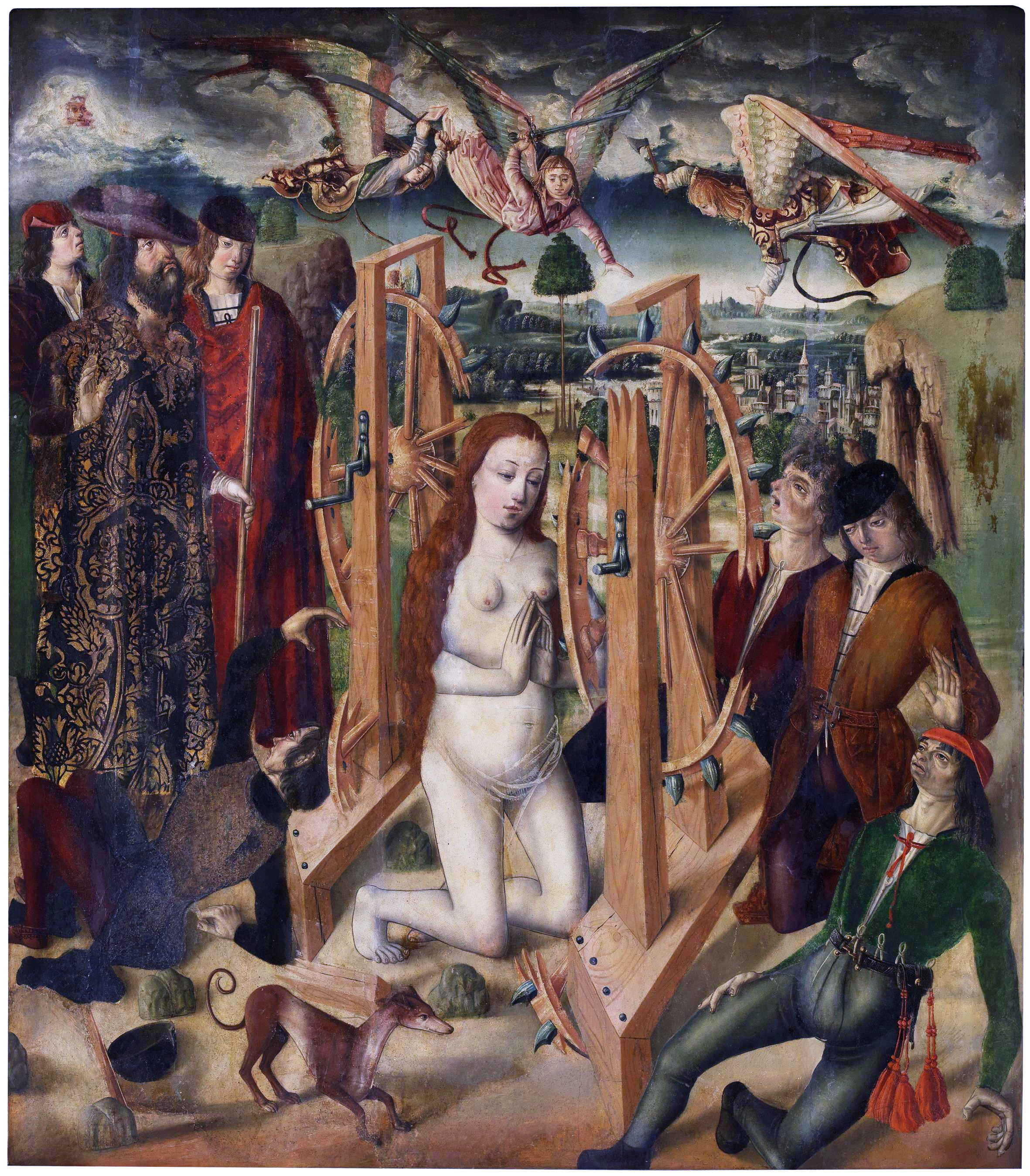
This painting by Lorenzo Lotto shows St. Catherine in heaven. She is certainly beautiful, but except for the palm branch in her hand nothing tells us about her martyrdom.

This one is better: Jan Provost at least shows us Catharina's death by beheading. But this painting merely recites a standard topos of hagiography: that of the unquenchable saint. Such a saint is imprisoned for her faith and tortured. When she remains steadfast, her tormentors try to kill her in some cruel and ignoble fashion — drowning, burning, presenting to lions, etc. — but she miraculously survives. Only when the exasperated executioners finally use the sword (the noble weapon), they succeed.
Consequently, there are many paintings showing a splendidly clothed maiden kneeling in prayer before a swordsman. There is perhaps a fleeting hint of previous tortures (here a wheel in the background), but otherwise the saints are rather impersonal and interchangeable.
Moreover: Why would the authorities provide such an expensive dress to a worthless follower of a despised new cult?

This is it! In Fernando Gallego's painting the maiden has not been spared torture and humiliation: She has been led naked to the place of execution, watched by many spectators who are thrilled by her nudity as well as by the prospect of seeing her suffer.
But is this realistic or merely the artist's phantasy? The torturers of all ages tried to break their victims' spirits by humiliating them, and erotic violence has always been one of the means. Furthermore, it is a historical fact that prisoners condemned to die in the Roman “games” were often presented naked to the crowd—even women. In this sense, Gallego's painting is certainly more realistic than that of Provost.
As fas ar the viewers are concerned, this picture is certainly better in capturing their interest and creating sympathy for the maiden (as well as other emotions) than the other two.
Let us face it: A good picture of the martyrdom of a saint contains a strong component of humiliation and erotic violence!